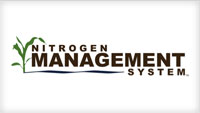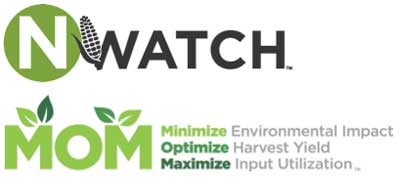
It was not long ago when we were experiencing the sunny 80-degree days of March, 2012, with plenty of time for field work and nitrogen (N) applications. We also remember the wet spring of 2009 when there was barely enough time to get the crop planted before the next rain with no time for pre-plant N applications. Now, the oscillating environmental conditions challenge us with yet another potential extreme as we face the planting season of 2014. Here is a little of what we may face in the upcoming months from an N management point of view.
No Fall N Applied. Anticipate a significant response to spring N applications. Make a pre-plant broadcast N application to get the corn crop started. Unless starter fertilizer is used, consider carrying herbicides with UAN (28 or 32%). Try a pre-plant, incorporated application of urea or a surface broadcast application of urea treated with Agrotain Ultra (minimizes volatilization). A broadcast application of 200-250 lbs ammonium sulfate should provide enough N, along with a plant-available sulfur source as well. A pre-plant application of Super-U or ESN should also work. If the only N source for the 2014 corn crop is a knifed application that is not positioned close to the corn row, anticipate a temporary light green or yellow corn plants and slow early growth, once the corn reaches V3 (three true leaves on the plant). This will be especially evident in continuous corn fields or corn-following-corn fields where the previous crop residue is incorporated with tillage this spring. Anticipate an N response from 30 to 50 lbs N applied to soybeans following corn as well (not clear on any economic return on investment, however).
Fall N Applied. Weather conditions, following a timely fall application (not too early), along with the use of nitrapyrin (N-Serve), put farmers in a good position for minimal loss of fall-applied N. N-WATCH sites will be able to verify the status of the fall-applied N, once the soil thaws and samples can be collected. Sustained cold temperatures over the winter months, combined with a cold March and reduced soil microbial activity (reduced potential for early nitrification or conversion to nitrate-N) are the primary reasons for this predicted reduction in N loss.
Even with minimal loss from fall N applications, seedling corn plants will still need supplemental N to get off to a good start because of the lack of residual soil N. As mentioned above, consider a broadcast N application ahead of planting, or starter fertilizer, to get the corn crop off to a good start. There may be adequate N applied for the crop, but unless it is within close proximity to the row, the seedling corn plants will likely exhibit a temporary N deficiency. Use the 4-R approach to N management with the help of your local ag retailer. The use of auto-steer or guidance systems may help offset the need for a broadcast N source pre-plant, if the corn row can be placed in close proximity to the applied N. It is suggested that the row be placed close to, but not over, the applied anhydrous ammonia, especially if the anhydrous ammonia will be applied this spring. If the seedling crop does not receive a supplemental source of N close to the row, anticipate a temporary light green or yellowed corn plants and slow early growth once the corn reaches V3 (three true leaves on the plant), especially where crop residue is incorporated ahead of planting.
Loss of Nitrate-N to Surface Waters. N-WATCH locations in Iowa and Illinois confirmed the lack of any significant Plant-Available N remaining in the upper two feet of the soil profile following the 2013 corn harvest (non-manured fields). The same management tool that warned of high residual nitrate-N as a result of the 2012 drought, has confirmed the lack of residual nitrate-N following the 2013 harvest. The lack of residual N from the 2013 corn crop, along with farmer adoption of N Management Systems and a cold March, will all be contributors to the reduction in nitrate-N loading of surface water anticipated this spring.
Want to learn more about N-WATCH? Farmers wanting to know more about the status of their fall-applied N should visit with their local ag retailer or visit www.illinoiscbmp.org about establishing an N-WATCH site. N-WATCH is a simple management tool to help inventory, track, and verify the concentration of plant-available N at a point in a field over time. It is not an N recommendation system. It is simply a management tool to provide an estimate of the form and concentration of plant-available N as the spring season progresses.

It is all about the M.O.M. message: Minimize environmental impact by Optimizing harvest yield and Maximizing N utilization. It is the message Midwest agriculture needs to embrace. A person recently attending a meeting where the M.O.M. message was introduced along with N-WATCH and Plant-Available N said “This is a message that production agriculture needs and should embrace.” He went further to say: “A M.O.M. with her P.A.N. is a powerful woman.”